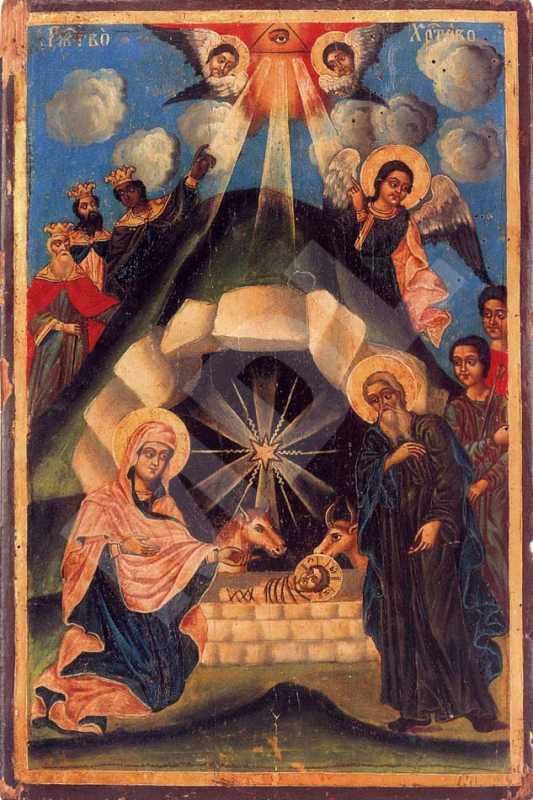The Nativity of Christ
Type:
Icon
Period:
The beginning of the
19 century
Toma Vishanov-Molera, born around 1750, painter of icons and murals, founder of the Bansko school of art. He grew up in the family of the clergyman Vishan. Around 1765 he went to Vienna, where he studied painting. It is not known who were his teachers there or when he returned to Bansko. His fellow villagers called him the Moler, Molera(from German Maler ‘painter’), whence the entire family's surname. Under the influence of the European 18th century art Toma Vishanov painted his works in a new manner, unknown until then in Orthodox art. The figures are realistic, vivid, expressive. Toma Vishanov is an innovator in the early period of Bulgarian Renaissance. His ideas on art were not understood and at first were rejected by his contemporaries. His work has not been studied extensively. He died after 1811 in Bansko.
Dimmensions (cm):
45
/ 29
Location
Country: Bulgaria
Private collection: Private collection
Source
Country: Bulgaria
Other source: Others
Object identification notes
The icon has a painted frame in black, red and gold. The background is blue milky in the upper part and marks an earth terrain in the lower part.
Description
Joseph and Mary kneel on either side of the couch on which the Child is. The heads of a cow and a horse to suggest that the place of the event is a manger are behind him. The three magi are behind the cave; two shepherds with distaffs are above Joseph and on the other side. An angel who points at the light, which emanates from the Holy Spirit in the high is behind the rock in a nonchalant artistic posture.
Iconographical technique: Tempera
Base material: Wood


